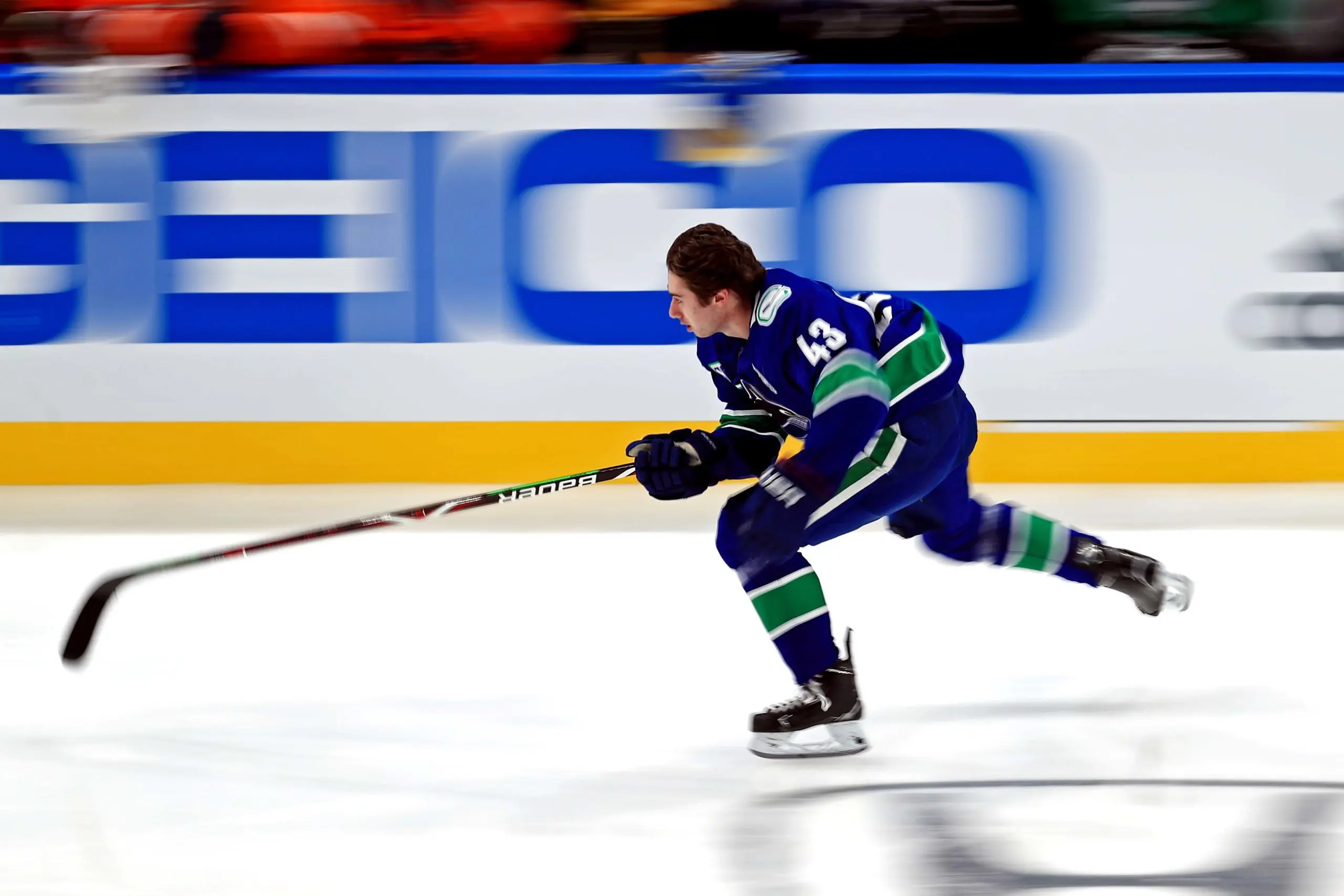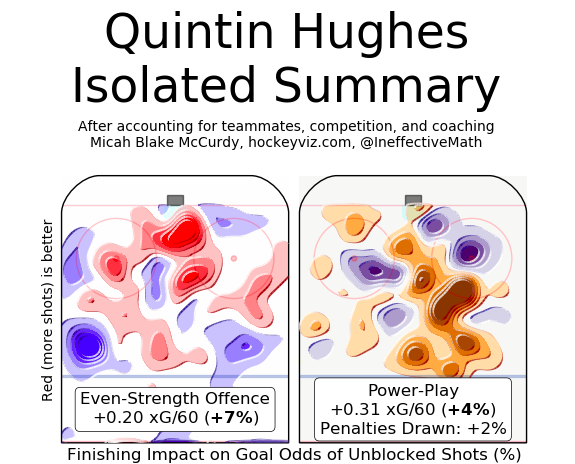Year (So Far) In Review: Quinn Hughes Dazzled And Is Only Getting Better

Quinn Hughes was simply remarkable this year for the Vancouver Canucks. He’s a Calder Trophy favourite and would be a shoo-in to win the award if not for an almost equally impressive rookie defenceman, Cale Makar.
The debate is one that’s been had many times and is one that I believe Hughes has the upper hand in thanks to playing tougher minutes and being relied on more heavily than Makar. But let’s save that debate for a later date. This is about Hughes and his year in review.
Never before have the Canucks had a defenceman who can wheel the puck quite as effortlessly as Hughes can. Hughes moves the puck up the ice better than any Canucks’ defenceman in recent memory, and he’s beginning to change the way fans in this market think about defence.
The numbers will tell you that even in tough matchups, Hughes held his own just fine and was actually the Canucks’ best defenceman when it came to controlling scoring chances at 5-on-5.
Hughes’ chances for/60 minutes unsurprisingly sits at 59.16 and his chances against/60 is 53.23. That means that more often than not, the Canucks were controlling the puck when Hughes is on the ice. When you take into account the matchups the rookie blueliner and his most frequent partner Chris Tanev were facing, those numbers become even more impressive.
But how do those possession numbers compare to the rest of the Vancouver blueline?
Alex Edler: CF/60: 60.89 CA/60: 63.81
Tyler Myers: CF/60: 59.45 CA/60: 60.69
The pairing of Edler and Myers also faced some tough matchups but generated a good amount of offensive chances. The main knock against this pairing was that they bled chances against at a high rate, as well.
Troy Stecher: CF/60: 56.99 CA/60: 61.82
Jordie Benn: CF/60: 50.22 CA/60: 65
Stecher’s numbers don’t exactly pop off the page, but it’s important to remember he played in the Canucks’ top four at times this year. He’s a versatile third-pairing defenceman who can play up and down the lineup, whereas Benn was used exclusively in a bottom-pairing role. Here are how the Canucks’ other defencemen fared.
Chris Tanev: CF/60: 51.94 CA/60: 59.82
Oscar Fantenberg: CF/60: 48.54 CA/60: 63.01
It was a tough year for Fantenberg, and it seemed to only get worse after a decent start to the year that made it appear as though he might just be the perfect seventh defenceman for this team. Tanev, on the other hand is heading into unrestricted free agency after coming off a fairly successful year. Again, his numbers may not jump off the page, but the most important number for Tanev is under games played.
Tanev’s fearless style of play often causes him to succumb to injury. This year, however, Tanev kept up that style of play and managed to suit up for all 69 games the Canucks played. He also looked right at home lined up next to who this whole article is about.
As I wrote months ago, Hughes made every single partner he played with this season better. That’s the sign of a great player and is something we often hear when you talk about players like Elias Pettersson, but it’s something seldom talked about when discussing defencemen — especially rookie defencemen.
If you watched even one of his games this year, you don’t need me to tell you how special Hughes is, especially with the puck. He provided the Canucks’ power play a whole new threat with his abilities to walk the line and let go of a sneaky good shot in a hurry. As you can see, Hughes’ impact on the offensive side was significant at both 5-on-5 and with the man advantage:

This is a player who is likely the most offensively dynamic defenceman to ever suit up for the Canucks.
His ability to defend due to his smaller stature was questioned early on but those questions went out the door almost as soon as they were asked.
Sure, he made mistakes at times this year, but who among the Canucks’ blueliners aren’t guilty of the same? Hughes’ defensive play was just fine, and I’d argue that it falls under the category of above average thanks to his nifty stick work and ability to get ideal body positioning to neutralize offensive threats. But don’t take my word for it. Who would know better than the man who spent over 700 minutes on the ice alongside Hughes this season?
“He plays very good defence, he’s very good obviously up the ice with the puck, and really good on the power play,” said Hughes’ partner Chris Tanev back in November. “He’s a full 200-foot player and he’s only going to get better as time goes on.”
As we look back on what may be the end of Hughes’ season, let’s end with that thought from Tanev — that Hughes is only going to improve on what we saw from him in his Calder-worthy rookie campaign.
Recent articles from David Quadrelli





